Blog – Chasing electric blue icebergs in Greenland

Last week, China’s sole icebreaker, Xue Long (Snow Dragon), completed its first voyage through the Northwest Passage. The Ukrainian-built vessel is now sailing off the coast of Chukotka, making its way back from Nome across the Bering Sea towards Shanghai.
While Xue Long was capturing headlines, I was on a scaled-down journey across a defrosting seascape. As part of the Arctic-FROST annual network meeting, 17 other Arctic social scientists and I took a turbo-prop plane from Kangerlussuaq, the main international airport in Greenland, to Narsarsuaq, an old U.S. military base in the southern, subarctic portion of Greenland. Soon after landing, we hopped on two boats and began speeding down the very fjord that Viking explorer Erik the Red sailed up in 985 AD. The weather on this late summer Tuesday was sunny and crystal clear, but the strong, direct light made it difficult to photograph the occasional icebergs we glimpsed.
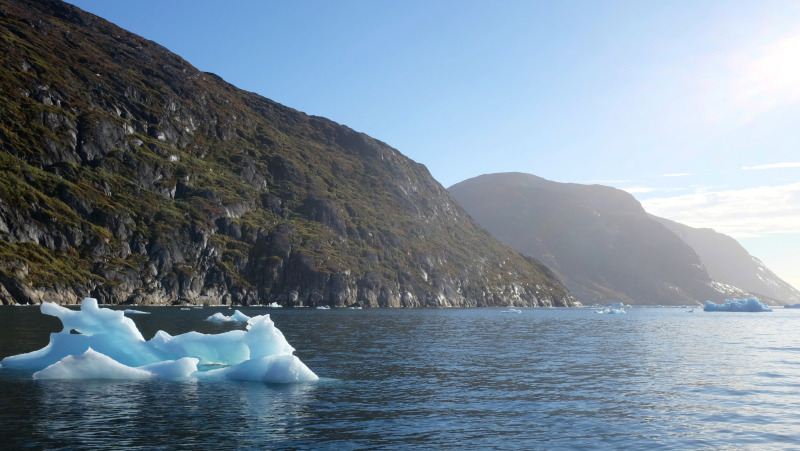
After two hours, we arrived in Qaqortoq, a settlement of 3,000 people that sits close to the ocean. Qaqortoq is a little less than 100 kilometers from the nearest calving glacier, so there are fewer icebergs in the waters around town. I noticed only one iceberg in the harbor, which I tracked over the course of our five-day stay.
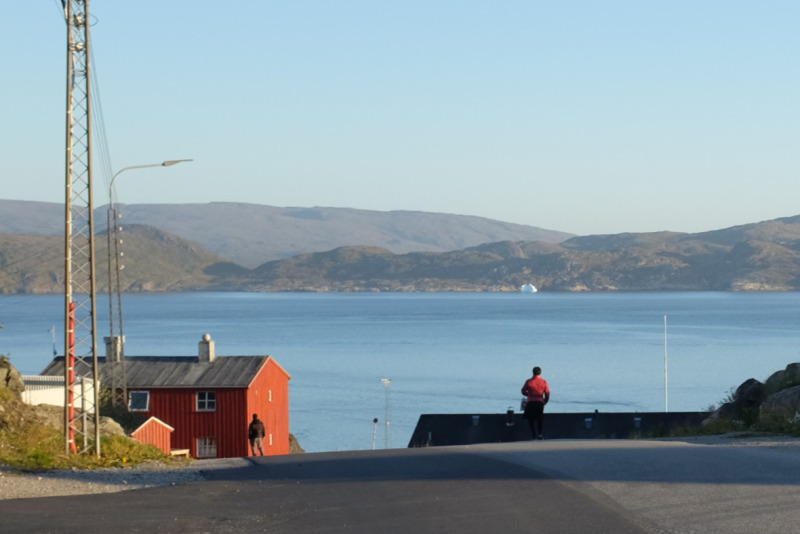
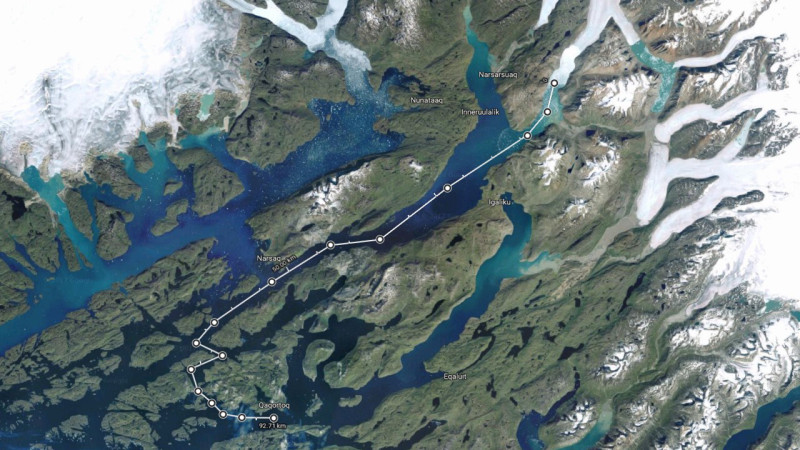
After that first sunny day in town, sleeting, pounding gray rainstorms coming off the Atlantic Ocean dominated the skies for two and a half days. I half wondered if they were related to the hurricanes that had swept through the Caribbean in the days prior. Despite all the rain, by the evening of the third day the iceberg still hadn’t budged or altered its shape.
The next morning, the iceberg was still stuck in place but greatly diminished in size. What used to look like a fairly proud and majestic iceberg standing alone in the waters off Qaqortoq was now a sad little overgrown pancake, a pale lumpfish floating on top of the water.
On our fifth and final day, I woke up and looked out the window as usual. The little iceberg I had been watching for days was gone. I was a bit sad that it had basically ghosted, but alas, it was our last day in town, too, so maybe the timing was right. It was 7:30 am, and our boats would depart in 90 minutes to sail back up the fjord to Narsarsuaq, near the ice sheet’s edge. That gave me just enough time to go on a short trail run up to the top of the mountain above town. I ran as high as I could in the limited time and was rewarded with a phenomenal view inland towards the ice sheet.
While resting in the crisp, still air, I heard a sharp crackling sound. It was a glacier calving somewhere in the distance. Then it was quiet again, without a single bird or insect interrupting the stillness. Another 60 seconds later, the glacier calved again. The sound of a million dominoes collapsing echoed across the moutnains. Even from my high vantage point, I couldn’t see the glacier. But in a way, it was even more magical and mysterious to only be able to hear it.
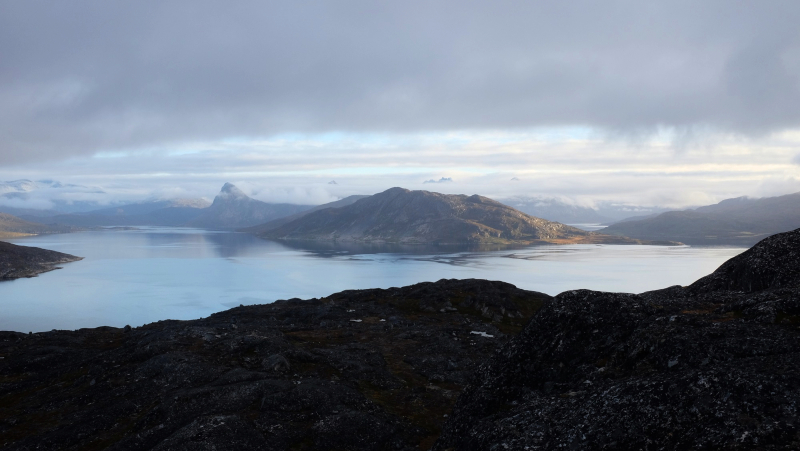
After the cryospheric cacophony ceased, I scrambled over a few more boulders to the other side of the peak to look over the fjord to the south. And there I saw it. The shrunken iceberg was floating there, far from where it had been 24 hours prior. It must have started its journey under the cover of night. Oddly, it was floating up a different fjord back in the direction of the ice sheet. Maybe it just wanted to discover its roots.
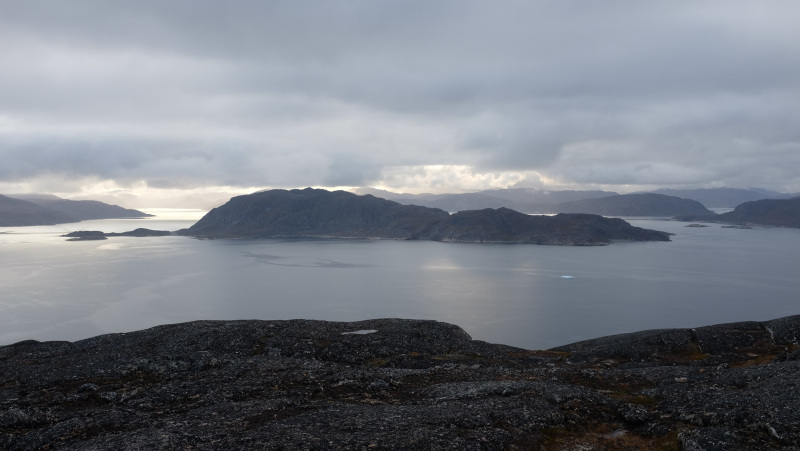
I left the iceberg to its own devices and returned back to town, just in time to get on the boat. The weather that day was gray and misty: ideal weather for photographing hulking chunks of blue, white, and black ice gliding in the milky-green fjord. Although less than a week had passed since we first sailed down the fjord, heading back up, the colors of the tundra had clearly changed. The red, orange, and gold hues of autumn replaced the green and yellow shades of summer, providing a striking backdrop to the ice.
The icebergs got bigger as we neared the ice sheet. We docked in Narsaq, a small town with a slaughterhouse and catering school. From the vantage point of the catering school’s dining room, the harbor looked like someone had dumped a misshapen ice tray into the water.
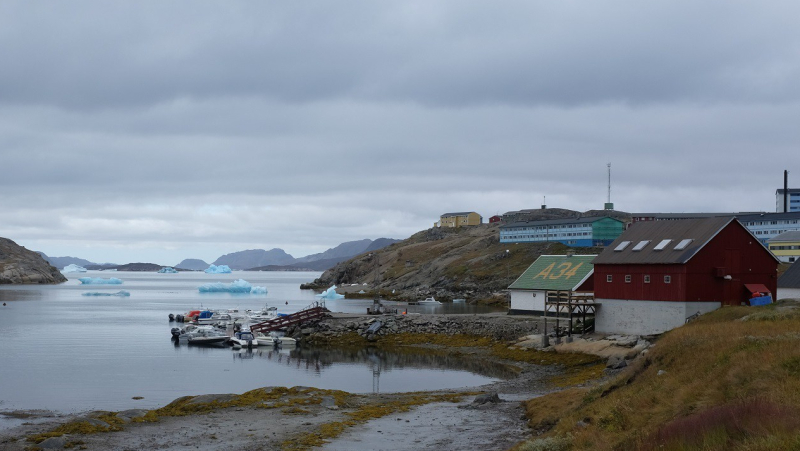
After lunch, we piled back into our boats and left Narsaq. We passed a snowy-white iceberg in the harbor that looked like a can of flavorless Pringles potato chips rotated 45 degrees.
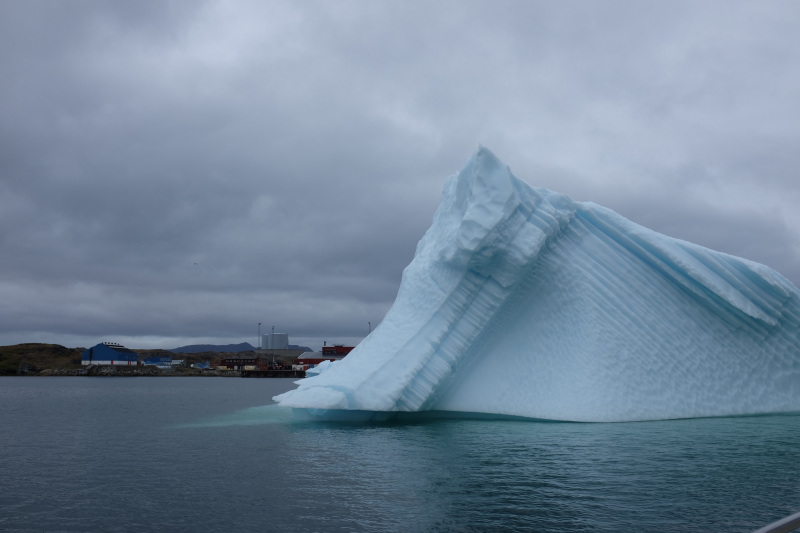
Heading back up towards the fjord, we first passed a creepy iceberg that looked like something Tim Burton might have dreamed up. Looking into the skeletal formation felt like gaping into the mouth of a baleen whale.
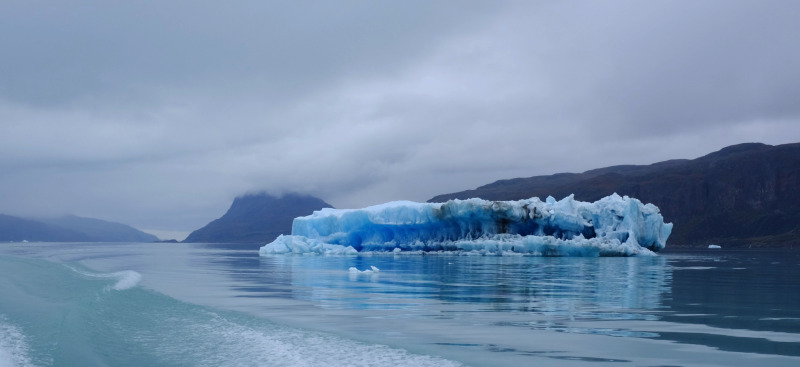
A few hundred meters up ahead, a massive turquoise blue iceberg sat smack dab in the middle of the fjord, where sheep grazed precariously on the steep sides of the mountains. The curving sides of the iceberg mirrored the topography around it.
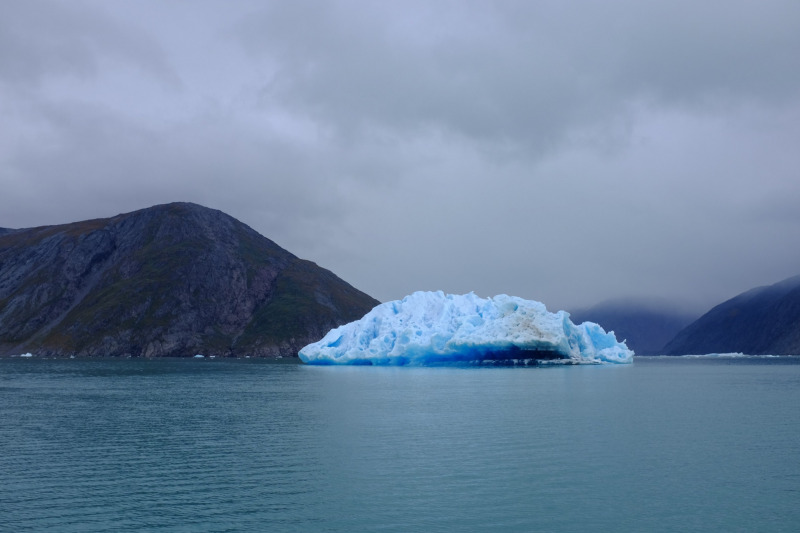
The iceberg dwarfed our boats as we approached. It must have been four or five stories tall. We circled around it, motors off. This made it quiet enough to hear the rapid drip of melting ice from the bottom ridge of the iceberg that hung above the water’s surface. Sailing around the iceberg was a surreal experience. The colors morphed from teal to blue to white as we sailed around it. Circumnavigating the iceberg, if you will, took several minutes.

The electric blue color of the ice meant that the iceberg was probably old – maybe hundreds of thousands of years old. As new snow, frost, and ice are deposited on top of a glacier, their weight compresses everything underneath. This pressure squeezes out the air that fills the minuscule gaps between millions of snow crystals inside a glacier. Since light can no longer reflect off the surface of compacted snow and ice crystals, it has to travel deeper into the ice until it reaches a reflective surface. Over the course of this path, weaker, redder light gets absorbed by the ice. Blue light has enough energy to keep going until it finally finds a surface and bounces off, producing the stunning colors seen in the photos below. One paper poetically refers to this hue as “subnivean blue light,” with subnivean meaning “under the snow.” Even rarer than blue icebergs are “emerald icebergs,” discussed by the New York Times in this 1993 article. Only 1 in 1,000 icebergs are green, and they are all from Antarctica, where the sea water is richer in organic matter like algae.
(P.S. Bonus points if you just realized what a great coincidence it is that the name of the band behind the classic 80’s anthem, Electric Blue, is called Icehouse.)
The epitome of our journey chasing the ice was, of course, getting as close as we could to the edge of the ice sheet. As we kept sailing towards the Qooqut glacier, the ice chunks got smaller and more frequent. A bitter wind blasted our faces. One crew member said, “Getting close to the ice sheet – it’s like opening the door to the freezer.” About three kilometers from the ice sheet’s edge, we could sail no further. The captain cut the engine and the wind ceased. We bobbed in the icy water and stared into the blank white vastness of the ice sheet in front of us for a good twenty minutes. A few people took some of the thousand-year old ice out of the water and broke it up into cubes to have with a few celebratory sips of bourbon. We had made it to the source of the ice.
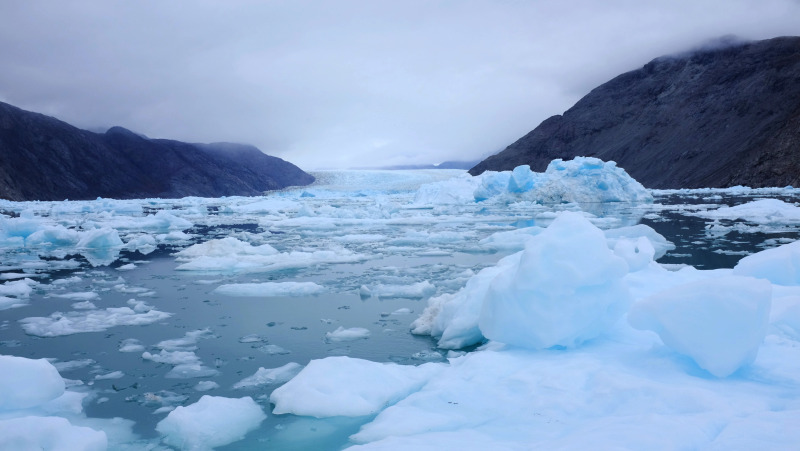
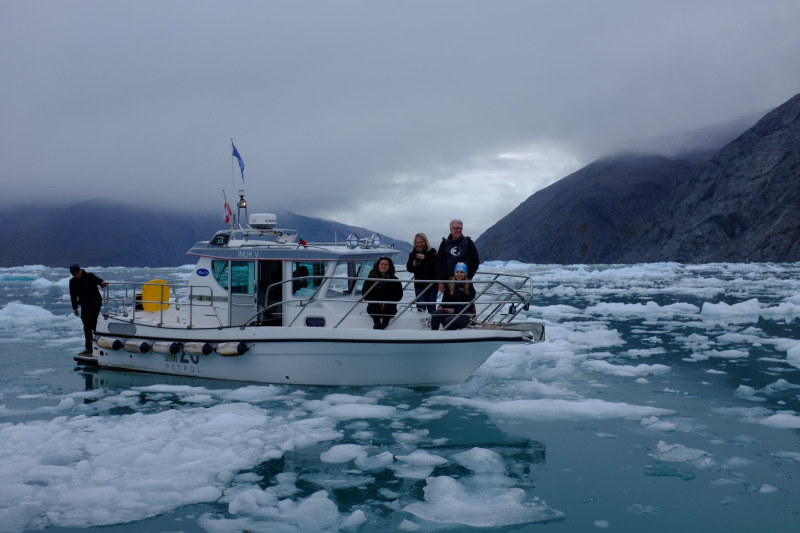
This post first appeared on Cryopolitics, an Arctic News and Analysis blog.




